The Japan - made Traditional series combines Fender's classic instrument - making style with refined Japanese craftsmanship, reviving Fender's core DNA with top - notch Japanese quality. This 2023 Limited Edition MIJ Traditional 60s Jazzmaster® in Olympic White with Blue Competition Stripe is a standout. It features a gloss - finished basswood body, 21 vintage - style frets, and a 9.5 - inch radius 'U' shape maple neck exclusive to the Traditional series. The 6 - saddle vintage - style bridge with a floating tremolo tailpiece and specially - selected original pickups for the series produce authentic and musical vintage tones. The narrow nut width is perfect for Japanese players. The eye - catching 'competition stripe' inspired by racing cars sets it apart from other guitars. This series reflects solid guitar - making skills and meets players' diverse needs. Specifications include: Jazzmaster® body shape, basswood body material, gloss polyester body finish, 'U' shape neck profile, rosewood fretboard, 9.5' (241 mm) fretboard radius, 34' (86.36 cm) scale length, 21 vintage frets, white dot fretboard inlays, vintage - style single - coil Jazzmaster® pickups (bridge and neck), 6 - saddle vintage - style adjustable bridge with 'floating' tremolo tailpiece, 3 - ply eggshell pickguard, nickel - plated steel strings (.045 -.105 gauges), vintage - style tuning machines, nickel/chrome hardware finish, and comes with a gig bag.
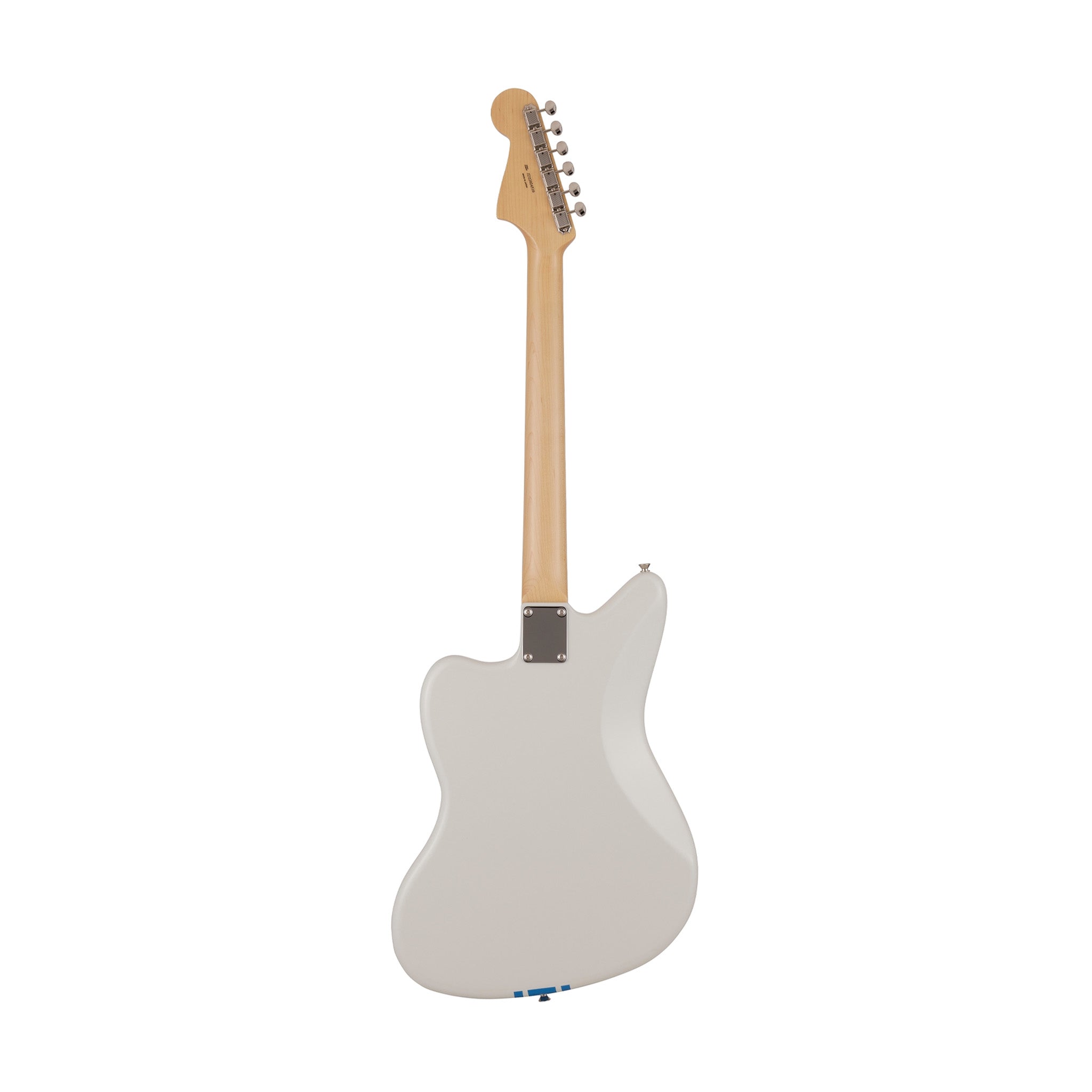
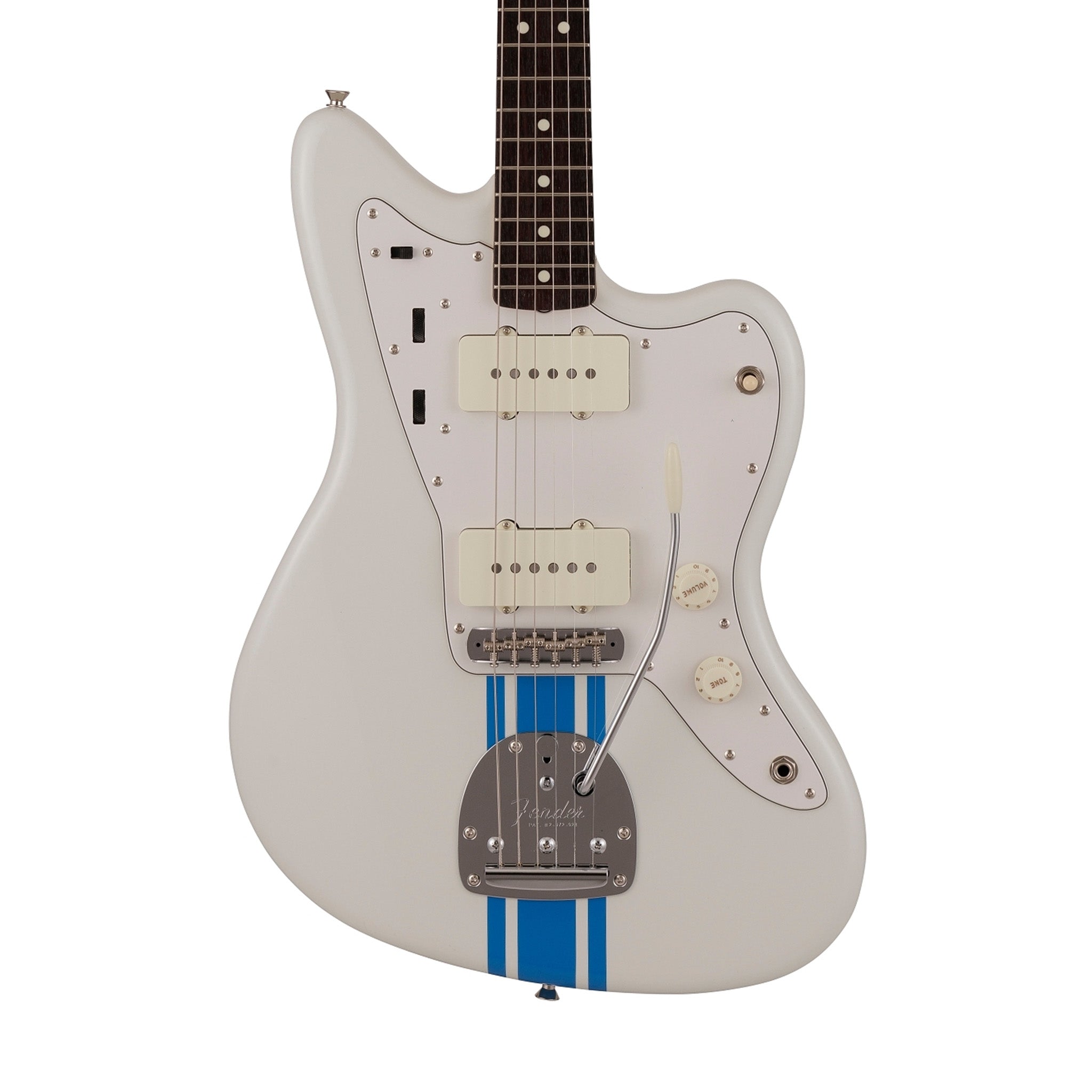
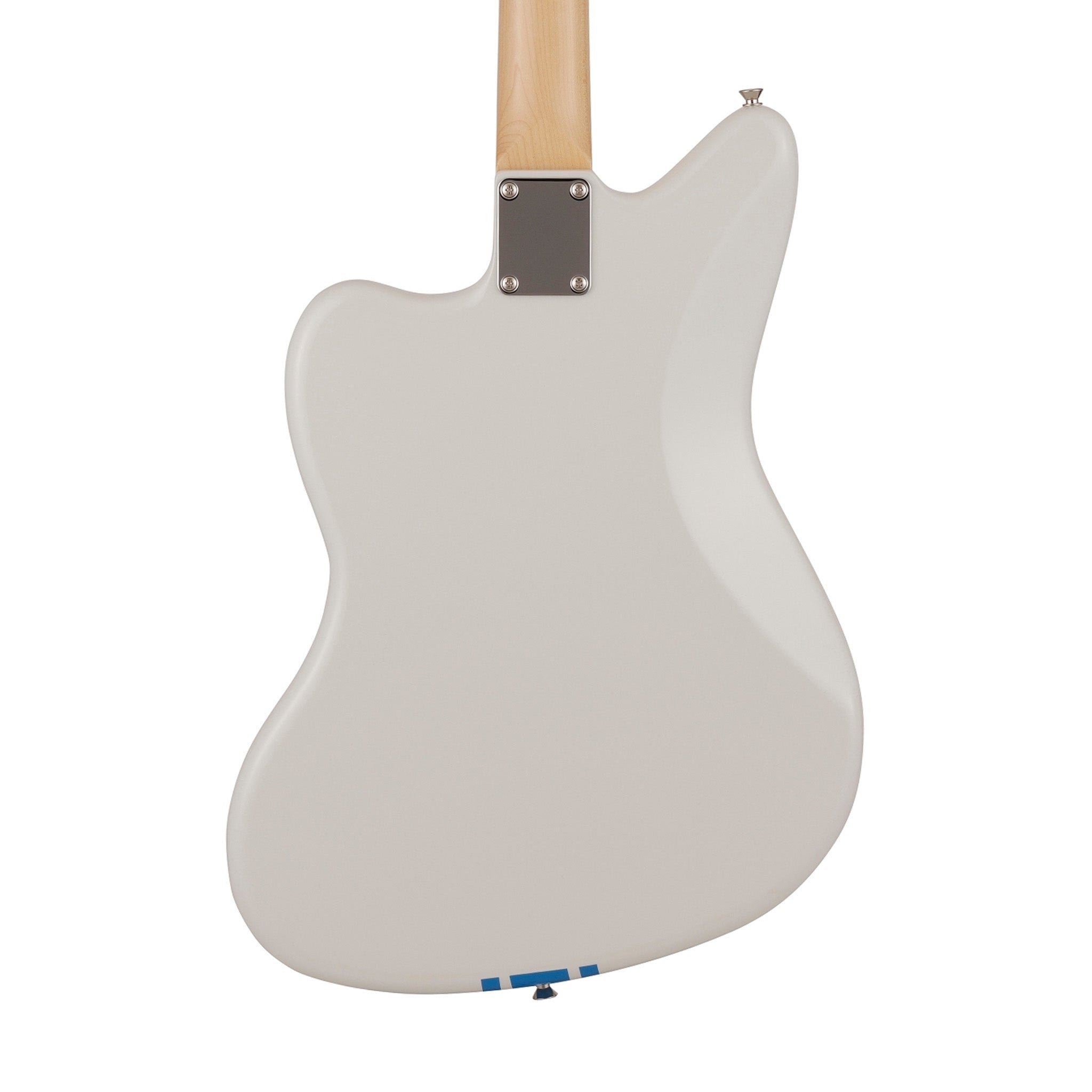
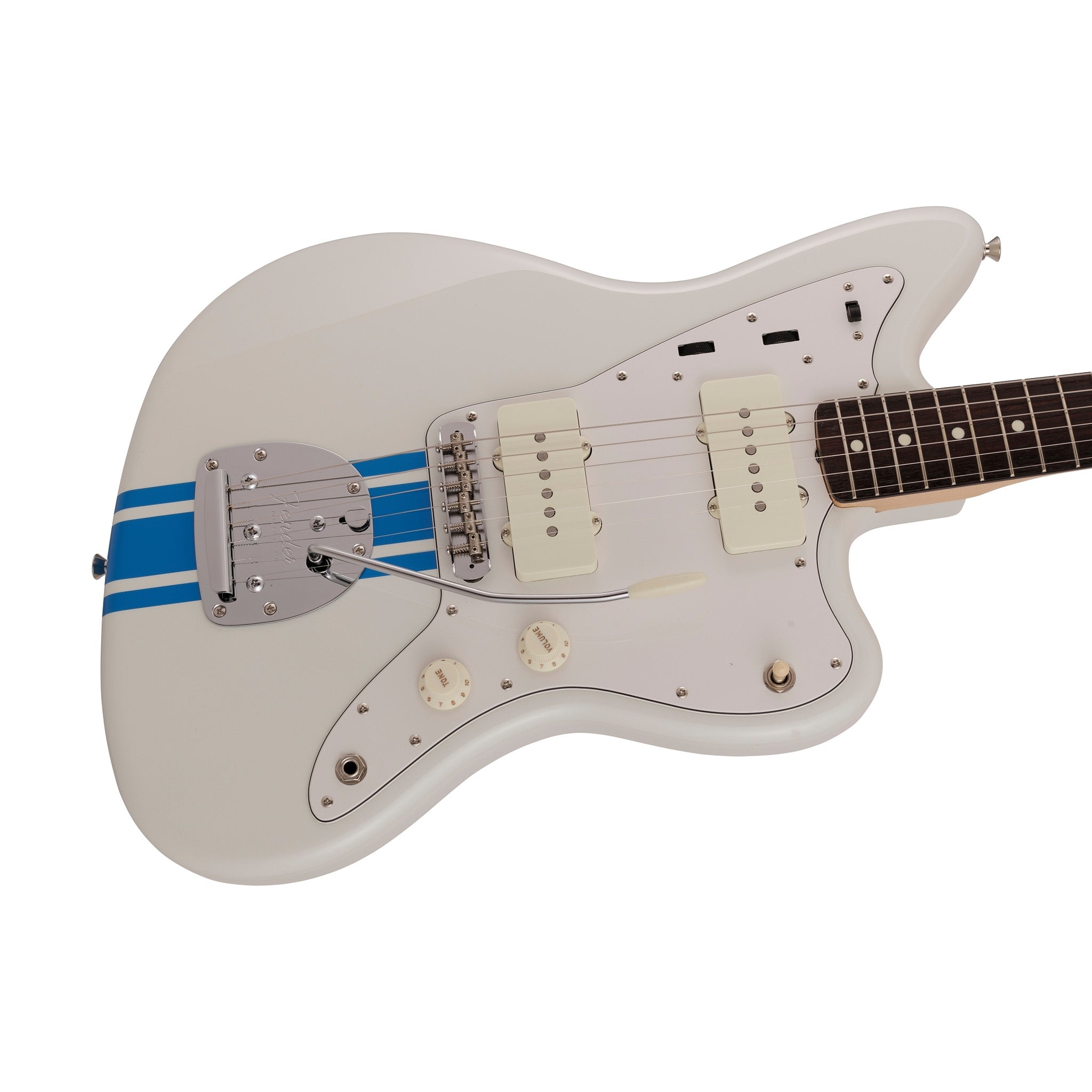
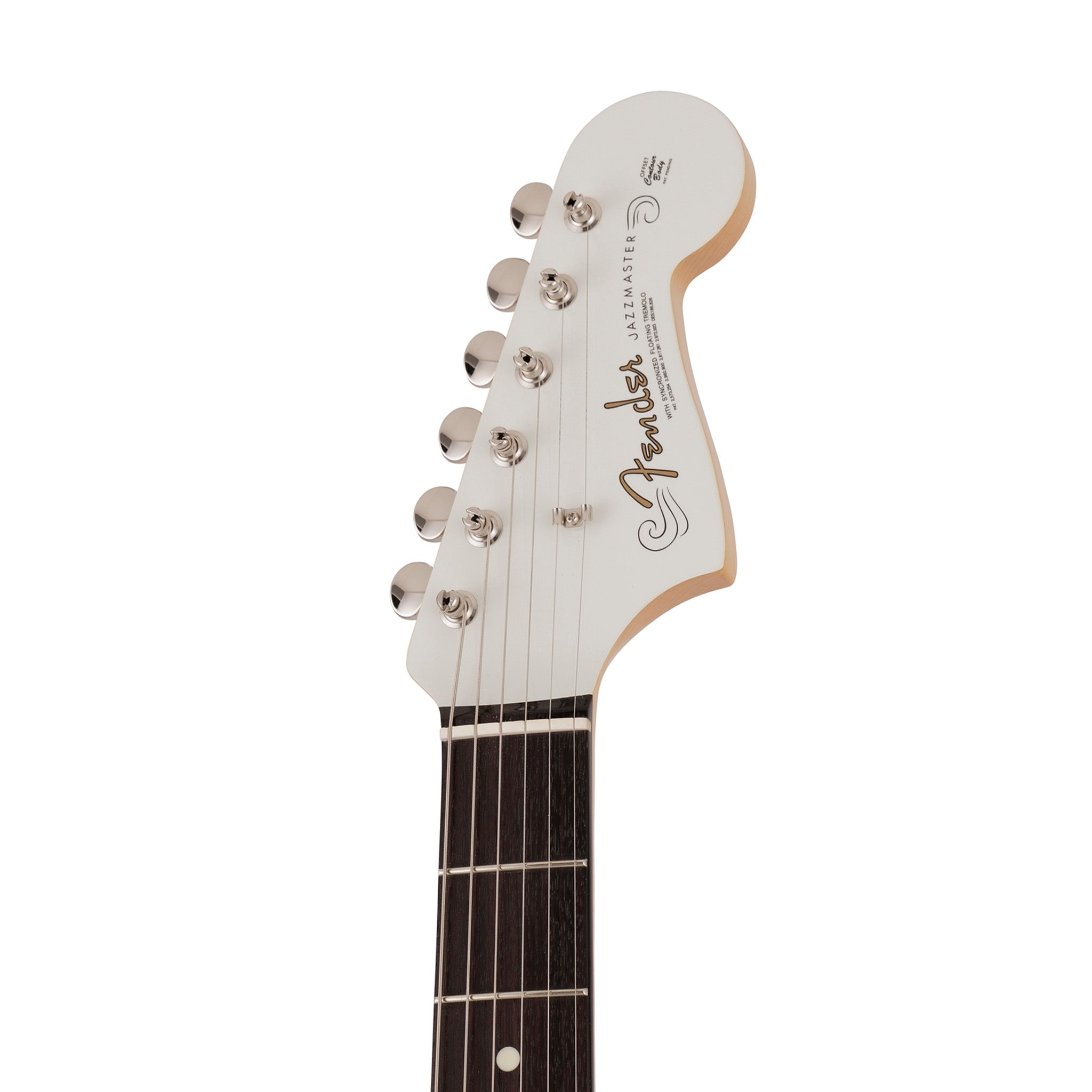
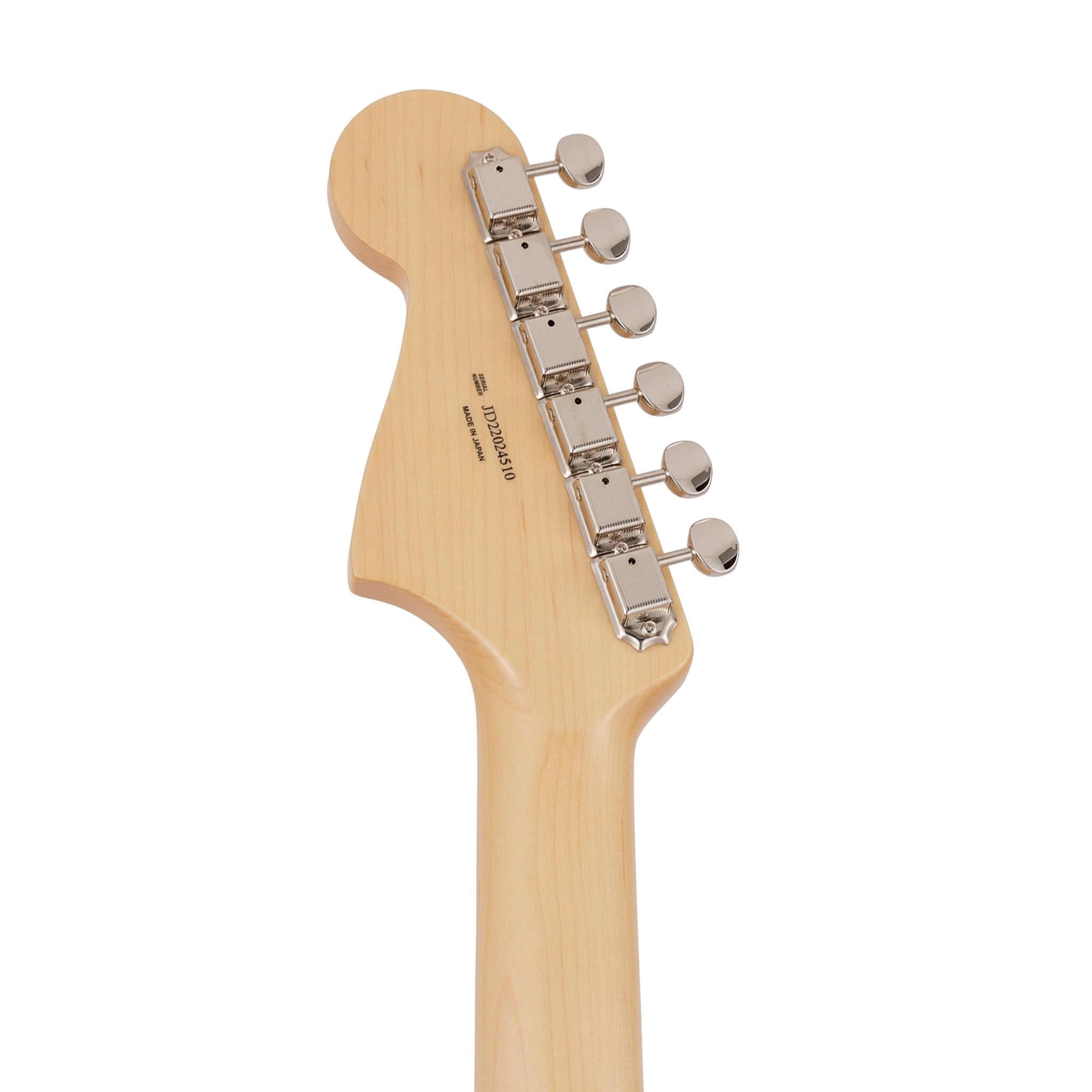
Using your Fender Japan Traditional II 60s Jazzmaster Electric Guitar is easy. First, make sure the strings are properly tuned using the vintage - style tuning machines. Plug the guitar into an amplifier and adjust the volume and tone controls on the guitar to get the sound you like. When playing, the narrow nut width makes it comfortable to fret notes. For the floating tremolo tailpiece, use it gently to add a vibrato effect to your playing. As for maintenance, keep your guitar in the provided gig bag when not in use to protect it from dust and scratches. Wipe the strings with a clean cloth after each use to prevent corrosion. Check the tuning regularly and adjust if needed. Also, make sure the body and neck of the guitar are clean. If you notice any issues with the pickups or the bridge, it's best to take it to a professional guitar technician for repair.